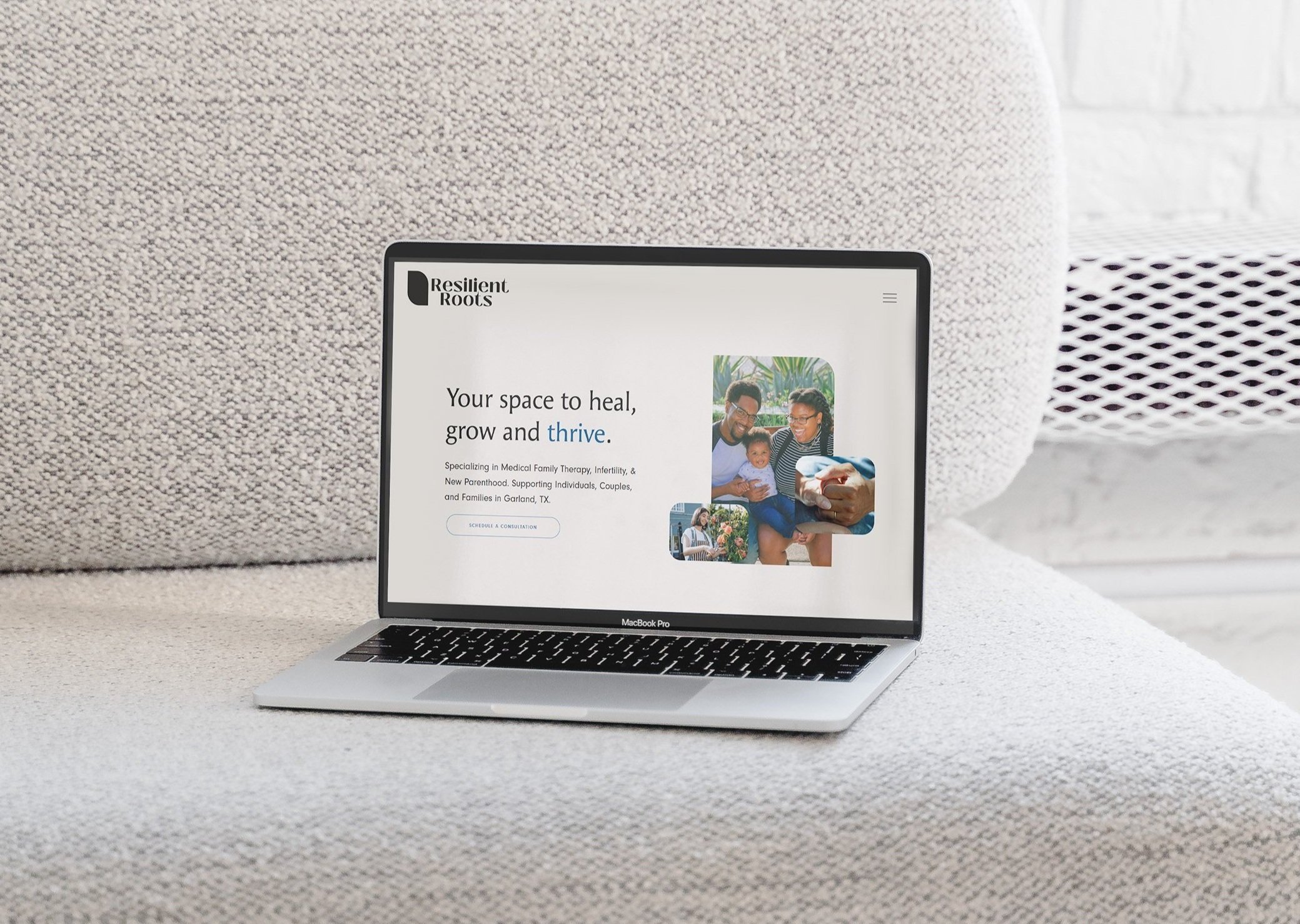Why Your Homepage Matters (and 4 Ways to Make it Better)
One of the biggest missed opportunities I see on therapy websites is when folks skimp on their home page. It might have their name or logo and then links to their other pages, and that's it.
But your homepage is waaaaay more than just a jumping-off point for your other content!
Let's discuss.
Why your homepage matters (in ways you might not realize!)
For SEO:
It creates the first impression for search engines (like Google). Your homepage is often the most visited page on your site, and search engines use it to understand your entire website!
It builds your "local SEO." Local SEO means showing up in search results for people nearby you. When you include your location and licensure on your homepage (and you should!) it signals to search engines (and potential clients) that you're a relevant option in that area.
It strengthens your other important pages. Linking to other pages from your homepage strengthens your site's "internal linking" (a fancy way to say linking to other pages within your website). When a specific page on your site is linked to more often, it signals to search engines that it is important.
It keeps people on your site longer. If someone comes to your website and immediately bounces, you lose points with Google. But if people scroll, click around and stay awhile, it boosts your rankings.
For Visitors:
It makes that crucial first impression! The homepage sets the tone for your practice and reassures visitors they're in the right place.
It guides them on a journey. Many visitors are unsure of the next step. A clear layout and calls-to-action make their journey seamless, which helps them feel engaged (and leads to more inquiries).
It reduces frustration & confusion. Having clear and concise content paired with relevant keywords not only helps improve your SEO ranking but also helps potential clients find what they are looking for quickly. This is especially important for therapists because your visitors are likely already feeling overwhelmed!
4 Keys to a Good Therapy Homepage
#1 Make a visually inviting first section with simple information to let people know what you’re about, right away.
This top section is sometimes called a "hero section" or "above the fold." Whatever we call it, it should include the following info:
What you do
Who you do it for
Where you do it (aka, where you are licensed)
#2 A high-level overview of your practice, with links to the important pages on your site.
Your homepage is like a book jacket. You aren't giving away everything, just enough for people to know if they should keep reading!
Write short blurbs and use buttons that link to the pages where they can learn more. You can also use "accordions," bullet points, and carousels to make the info more compact so they don't have to scroll forever to find the content they want.
#3 Make an emotional connection with your visitor before introducing your offerings.
Let them know you understand what they may be struggling with (and that there is hope).
For more on how to do this, see our article How to Write Your Website Content to Attract Your Ideal Client.
#4 A clear "call to action.
Let the person know in very concrete terms what step they should take next if they feel you are a good fit (e.g., "Contact me to book your free 15-minute consultation").
Want to get your homepage right?
Check out our How to Build A Great Therapy Homepage Mini Course!
Our simple guided framework helps you craft the perfect homepage content, connect with clients you love to serve, and actually show up on search engines.
So there you have it, those are the essentials. But what if you want to take it a step further?
Here are some other elements to consider:
Logo and branding: Make sure your logo, colors, and fonts reflect your practice's personality, creating a cohesive look and feel. This article is a beginner's guide to understanding branding and emotions. And if you need help troubleshooting your logo in Squarespace check out this post.
Clear contact info in your header. Ensure your contact page is prominent in your main navigation. Stay away from "cute" language. Have it say "contact me," "contact," or maybe "get in touch." It's great to have it as a button to highlight it and make it hard to miss!
Social proof. I know that using client reviews or testimonials can be ethically fraught for therapists. But, there are alternatives! You can include professional credentials (e.g., "Licensed in WA since 2015") to build trust (this is also good for SEO, so it's a win-win). Or you can ask colleagues for reviews!
Optimize your headings. Headings matter for all the things: SEO, accessibility, and user experience! Check out this article: How Headings Improve Your Website's SEO & Accessibility.







